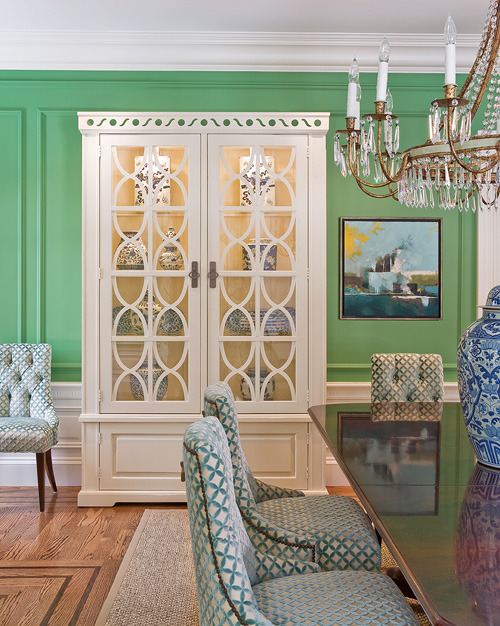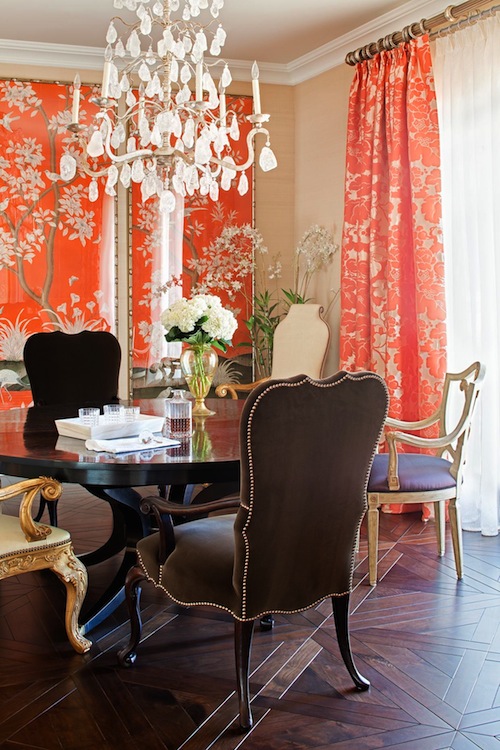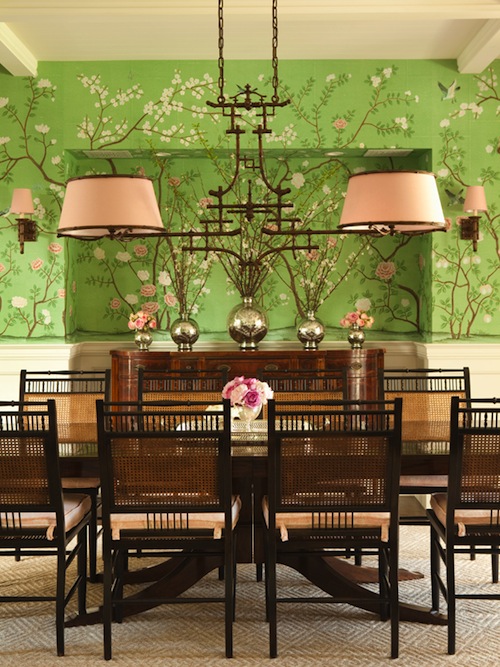I thought I’d share this small study I found at the bottom of my drawer. A series of black and white drawings which start with a very linear and architectural perspective and evolve into a loose freehand sketch. Fresh out of school I found myself traveling through South America in ancient mystic lands of far way (for a European at least). The media is pen and marker, and the subject is the indigenous people of Cusco, Peru. Their fairly untouched culture reveals a subtle connection to the ancient lifestyle of Egypt suggesting the lands most have been joined at some point. The woman at the lake is standing on a Uros boat much like the Egyptians used long ago for transportation, at Lake Titicaca layer upon layer of dried reeds have been shaped into man made islands where they live work and play (talk about Lake-front living). These studies although somewhat abstract show daily life in the mountainous region of Peru.
Arcadian Home Guest Post - Dining Rooms
Hello, everyone! It’s Marie here with a guest post from Arcadian Home blog, a fabulous place to find interior design inspiration including great decorating ideas for everything from beautiful folding screens to glittering traditional chandeliers.
Those of you who are regular readers of Avanzato Design blog are already familiar with the always interesting and informative monthly palette trends series. Inspired by Vincenzo’s obvious love of color, we've pulled together eight of our favorite color-infused traditional dining rooms to share with you today. Please enjoy!
~ Marie
A traditional dining room with warm wood flooring is exquisitely dressed in soft yellows and accented with inviting lime-yellow end chairs.
Warm buttery yellow walls create an appealing background for this cheerful and slightly feminine traditional dining room. Drapery panels in pretty pink hues work beautifully with a large floral pattern on the chairs. Charming table decor gives this space a Sunday brunch feel.
Minty greens and blues bring a fresh modern take on traditional with a Chinoiserie twist. The vibrant wall color works beautifully with the pure white woodwork above and below.
Warm brown tones pair work well and tone down the bright orange fabrics in this updated traditional dining room. A beautiful mix of dining chairs includes two in chocolate brown velvet.
Brilliant turquoise brings this spacious dining room to life. Using so much color might seem like a bold design choice, but works here without overwhelming the room.
Wallpaper in white and pink on green brings a lively feel to this otherwise sedate dining room. The pretty traditional pattern creates a beautiful background for the wood furnishings in this space. Rather than the expected buffet lamps on the antique sideboard, silver vases of blooming branches mimic those in the wallpaper.
Vibrant pink is exquisite in this beautifully appointed traditional dining room. The deep pink hue is at once powerful and appealing. It must look even more stunning after dark in the glow from candles, wall sconces and chandelier.
This purple-infused dining room is beautiful on its own, but becomes an extraordinary space at the holidays with the addition of red decorative elements. If this room is any indication, purple and red seem to have a very companionable relationship. Images 1 | 2 | 3 | 4 | 5 | 6 | 7 | 8
What do you think of these traditional dining rooms? send us your comments and discover more home decor, accessories, and modern pendant lights at our blog!
Franz Xaver Messerschmidt
Born in the village of Wiesensteig in what is now part of southern Germany, Baroque sculptor Franz Xaver Messerschmidt created a series of portraits that were undervalued and rejected as unrefined works of art during the time of their creation 200 years ago. The collection, made up of faces carved in alabaster or cast in lead and tin alloy, was thought to be the workings of a “madman” as their expressive nature was unlike the standard designs of the time.
Wiesenteig always maintained a passion for the arts. At the age of 18, he moved to Vienna where he focused on refining his craft at the Academy of Fine Arts. During his early years, Messerschmidt’s commissioned portraits all depicted a style of stoic blankness, a classic pose similar to that often associated with the ancient rulers of Rome.
As time progressed, Wiesensteig began to show signs of mental strain. After being passed over twice for a position as a professor of sculptor, he sold his home and moved to the Slovak Republic where he lived alone and began to embrace the life of a hermit.
Amid his time alone, Messerschmidt began to develop a slight obsession with dramatic facial expressions. His designs are typically shown with tightly closed lips encompassing nothing more than the head and neck. This forces viewers to really focus on the carved details of the muscles and stretched skin. 200 years ago these heads were dismissed, however today Messerschmidt has become famous for his remarkable series of “Character Heads.” The modern creations have become a favorite amongst art lovers around the world.
Images via:
nedbajic.wordpress.com, common.wikimedia.org, laboiteverte.fr, nosideuo,blogspotcom, mikyag.blogspot.com, cultureheroesinc.blogspot.com


















